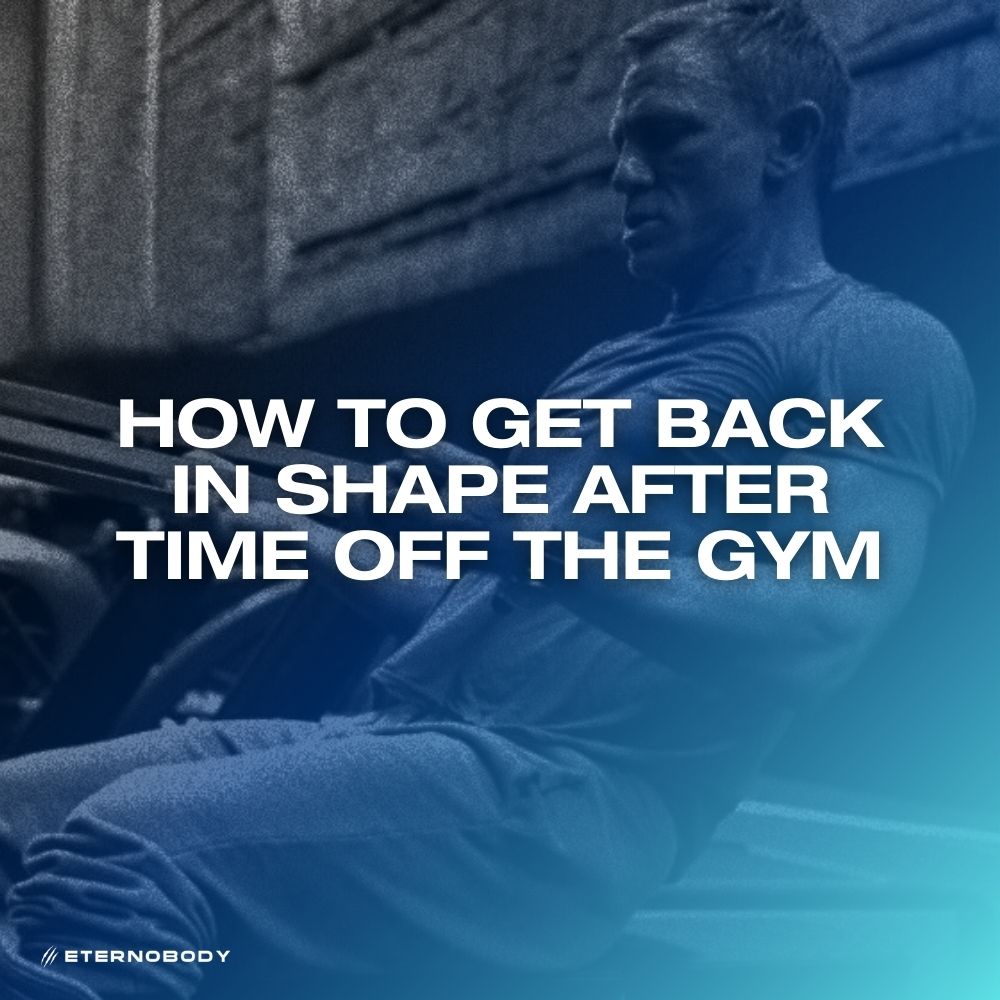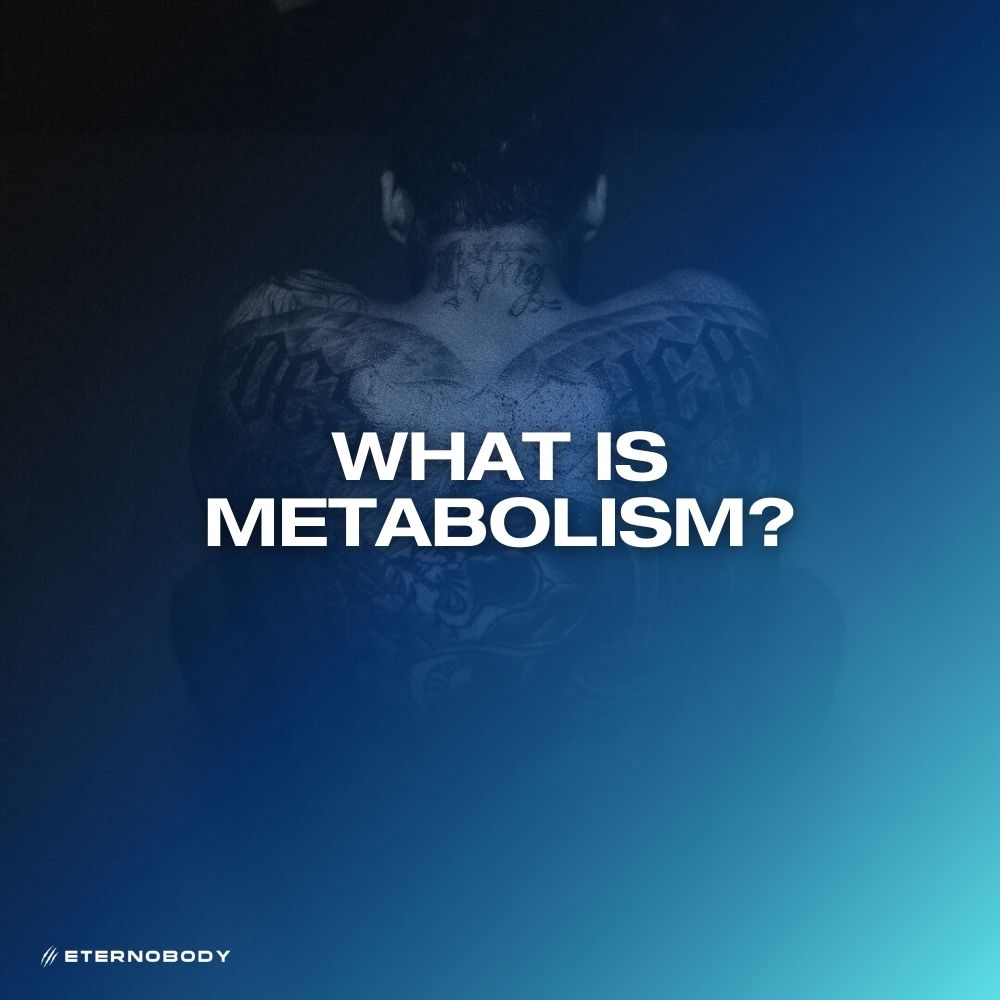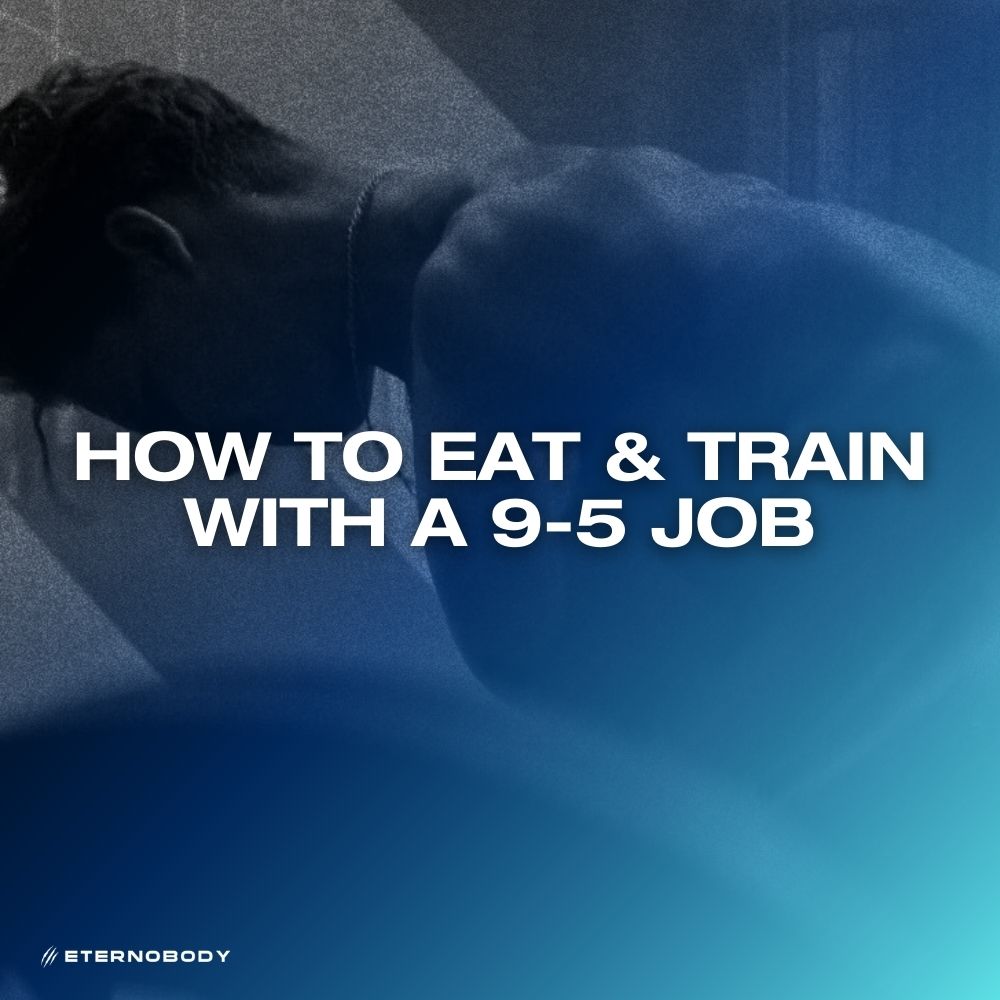
The dreaded skinny fat physique is holding you back, but with this proven 5-step plan, you'll finally build muscle where you want it and lose fat where you don't.
INTRODUCTION
If you're dealing with the skinny fat body type, you're not alone. This frustrating physique - where you look thin in clothes but lack muscle definition and carry stubborn fat around your midsection - can be fixed with the right approach.
I'll break down a practical, step-by-step strategy that actually works, based on my experience helping countless people transform this specific body type.
WHAT CAUSES SKINNY FAT
Most skinny fat physiques develop from two main issues:
1. Not eating enough calories (often less than 2,000 daily)
When you consistently underfeed your body, it enters a preservation mode where it holds onto fat stores while being reluctant to build new muscle tissue. Your body perceives the lack of calories as a threat to survival and prioritizes fat retention over muscle development. This is why simply eating less often makes the problem worse - you might lose weight, but you'll lose muscle too, making the skinny fat appearance more pronounced.
2. Inconsistent training with long periods of inactivity
Many people with skinny fat physiques have a history of on-again, off-again training. They might exercise intensely for a few weeks, then stop completely for months. This pattern prevents any meaningful muscle development while allowing fat accumulation during inactive periods. Without the consistent stimulus of resistance training, your body has no reason to build or maintain muscle tissue.
This creates the perfect storm: not enough consistent nutrition to build muscle, but enough excess or irregular eating patterns to store some fat, especially around the midsection.
THE 5 STEP SKINNY FAT SOLUTION
STEP 1: SORT OUT YOUR MACROS
The first and most important step is understanding exactly what you're eating. Most people with skinny fat physiques have absolutely no idea about their daily nutrition - they might say things like "I try to get protein in" or "I eat three meals a day," but they can't tell you specifics.
Let me break down exactly what you need to track:
Protein: Minimum 0.82g per lb of bodyweight
For an 80kg person, that's 145g of protein daily. This isn't negotiable - protein is the building block of muscle tissue, and without adequate amounts, your body simply cannot build new muscle. Protein also has the highest thermic effect of food, meaning your body burns more calories digesting it compared to carbs or fats.
Fats: Minimum 60g daily
Never go below this amount and I actually recommend not skimping on fats at all. Your body uses fats for hormone production (including testosterone, which is crucial for muscle development), cell membrane integrity, and nutrient absorption. When people severely restrict fats, they often experience low energy, poor recovery, and hormonal issues - all of which make fixing a skinny fat physique nearly impossible.
Carbs: Fill the remainder of your calories
Contrary to popular belief, carbs aren't the enemy. They provide the energy you need for intense training sessions and help replenish muscle glycogen. Many people with skinny fat physiques do well with moderate to higher carb intakes because it fuels their workouts and supports recovery.
To put this into practice, you'll need to:
- Track and measure your food (at least initially for 1-2 weeks)
- Use a tracking app to record everything you eat
- Calculate your starting calorie intake
- Adjust your food choices to hit your macro targets
This process might seem tedious at first, but it's absolutely essential and then you've unlocked a liberating skill for life. Without this foundation, everything else becomes guesswork.
STEP 2: PROGRESSIVE CALORIE INCREASE (5-WEEK PLAN)
Rather than dramatically changing your diet, we'll gradually increase calories over 5 weeks. This methodical approach prevents fat gain while supporting muscle growth.
Here's an example for a detail breakdown of someone who's been consuming less than 2,000 calories (your starting point may be different but the same concepts apply):
Week 1: 2,100 calories
- Keep protein at your target (145g for an 80kg person)
- Add the extra 100 calories from carbs or fats based on preference
- Focus on hitting this target consistently every day
- Track how your body responds and how your training sessions feel
Week 2: 2,200 calories
- Maintain the same protein intake
- Add another 100 calories from carbs or fats
- You might notice slightly better workout performance
- Your recovery between sessions may begin to improve
Week 3: 2,300 calories
- Protein remains unchanged
- Add another 100 calories from carbs/fats
- Your energy levels should be noticeably better
- Strength in the gym should be increasing
Week 4: 2,400 calories
- Same protein target
- Another 100 calorie increase
- You might start seeing visual improvements in muscle definition
- Workouts should feel consistently better
Week 5: 2,500 calories
- Protein still at target level
- Final 100 calorie increase
- Energy levels should be significantly better than when you started
- You may notice better muscle fullness and definition
What's fascinating is that during this phase, many people start looking leaner despite eating more. This happens because:
- The increased calories support better training performance
- Your metabolic rate increases with more food intake
- Your body has the resources to build muscle, which improves your overall body composition
- Better recovery leads to more consistent training adaptation
Throughout this entire phase, you should be performing at least 2-5 resistance training sessions per week (3 is great for most men). These should focus on compound movements and progressive overload - meaning you're consistently trying to add weight or reps to your exercises.
STEP 3: ADD STRUCTURED CARDIO (STEPS)
Once you've reached 2,500 calories and established nutritional consistency, it's time to increase your calorie expenditure through strategic cardio.
I would complete this in the form of walking/steps/low incline treadmill. This serves as active recovery while increasing calorie burn. You're now burning additional calories while keeping the same calorie intake. 8,000-15,000 daily steps is a great target.
This creates a significant calorie deficit without reducing your food intake. Your metabolism adapts to the higher workload while being supported by adequate nutrition. The beauty of so-called LISS cardio is that it burns calories without:
- Interfering with muscle recovery
- Creating excessive hunger
- Adding significant stress to your system
- Requiring intense effort (making it sustainable)
I would stick with this for next 5 weeks so that by week 10, you'll be consuming 2,500 calories daily and getting in some daily steps alongside your resistance training. Stay at this level for several weeks until progress plateaus - meaning your body composition stops changing noticeably.
During this phase, take weekly progress photos and measurements. You should notice gradual improvements in muscle definition and reduced fat, particularly around the midsection. The combination of adequate nutrition, consistent resistance training, and strategic cardio creates the perfect environment for body recomposition.
STEP 4: CHOOSE YOUR DIRECTION
Once you've plateaued (typically after 3-5 additional weeks at the 2,500 calorie level), you have two options. This is where your personal goals become important:
Option 1: Get Leaner (Short-Term Focus)
If your primary goal is to reduce body fat further:
Week 15: 2,400 calories
- Reduce daily intake by 100 calories
- Maintain all your daily steps
- Continue with the same resistance training
- Monitor progress closely - you should see renewed fat loss
Continue reducing by 100 calories when progress stalls
- Stay at this calorie intake until no signs of visible changes before reducing again. Always be cautious to drop calories. Wait for 1-2 weeks of zero change in scale or progress photos.
- Each gradual reduction creates a new deficit that stimulates fat loss if you plateau but it comes at a cost.
- Your body will eventually adapt to each new intake level
Don't go below 2,000 calories
- Dropping too low undermines recovery and muscle retention
- At extremely low calories, hormonal function deteriorates
- Training quality suffers significantly below this threshold
This approach works but makes building muscle difficult. The key drawback is that by reducing calories, you limit your body's resources for muscle growth and recovery. Don't stay at the lowest calorie level for long - once you've reached your desired leanness, begin gradually increasing calories again to maintenance level and enter a gradual bulk.
Option 2: Gradual Bulk (Recommended)
For most people struggling with the skinny fat physique, this is the better long-term strategy:
Build up your metabolism and add muscle:
- Increase calories by 50-100 each week (2,550, 2,600, etc.)
- Each small increase supports additional muscle growth without significant fat gain
- Your body adapts to utilizing the extra calories for recovery and growth
Gradually reduce LISS sessions:
- Week by week, you can ease off the steps if you feel like but they are great for overall health, mood, etc.
- This allows more recovery resources to be directed toward muscle building
Target no more than 0.5 lbs weight gain weekly:
- If gaining faster than 0.5 lbs per week (2 lbs per month), hold calories steady instead of increasing.
- This slow approach minimises fat gain during the muscle-building phase
Build up to around 3,000 calories:
- For most people around 80kg, this represents a productive muscle-building intake
- The gradual approach allows your metabolism to adjust to the higher intake
- Muscle growth becomes noticeable while fat gain remains minimal
This patient approach prevents excessive fat gain while supporting steady muscle growth. The key is understanding that muscle building is a slow process - expecting rapid gains inevitably leads to excessive fat accumulation.
STEP 5: LONG TERM CYCLING
For truly transforming a skinny fat physique over the long term, you'll need to cycle between phases of building and cutting throughout the years:
Building Phases:
- Follow the gradual bulk approach outlined above
- Focus on progressive overload in training
- Target strength increases across all major lifts
- Allow for very gradual weight gain (2 lbs per month is plenty)
Maintenance Phases:
- Hold calories steady after your building phase
- Maintain training intensity but possibly reduce volume slightly
- Allow your body to normalise at the new set point
- This phase prevents rapid fat gain or muscle when transitioning from building to cutting phases
Cutting Phases (8-12 weeks maximum):
- Gradually reduce calories (no more than 200-400 below maintenance unless you have significant fat to lose)
- Increase steps as a form of cardio strategically
- Maintain or even increase training intensity to preserve muscle. You must maintain strength on lifts at all costs.
- Focus on protein intake during this phase (it may need to increase slightly)
- Still maintain a balance of carbs and fats
Repeat the cycle:
- Each time through this cycle, you'll add more muscle and remove more fat
- Over 1-2 years, this approach completely transforms a skinny fat physique
- Each cycle becomes more effective as your muscle mass increases
KEYS TO SUCCESS
TRAINING CONSISTENCY
This isn't an 8-week fix then you're done. If you want an "Eternobody" then resistance training must become part of your lifestyle. Two weekly is the minimum, with anywhere up to five being great.
What this looks like in practice:
- Establish a realistic schedule you can maintain long-term
- Focus on compound movements
- Train in the 5-12 rep range for most exercises
- Track your workouts and focus on progressive overload
- Do reactive deloads or time off when needed to prevent burnout and injuries
- Treat these sessions as non-negotiable doctor appointments
Missing occasional workouts is inevitable, but the goal is consistency over months and years, not perfect adherence. Your body responds to the overall stimulus over time, not individual sessions. It isn't difficult to commit to allocate 2-4 hours per week to training if this is something you care about.
NUTRITION CONSISTENCY
Most people fail here. Weekend overeating can easily undo a week of progress.
To maintain consistency:
- Plan your meals in advance when possible
- Prepare larger batches of protein sources to have ready
- Identify trigger situations that lead to overeating and develop strategies
- Allow for modest planned (even daily) treats rather than unplanned binges
- Track everything if you're new to this, even on days when you exceed your targets. After a while you will build skill to eyeball and be more relaxed.
- Use a weekly average approach - it doesn't matter if you overeat one day.
Remember that one perfect day doesn't build a physique, and one imperfect day doesn't ruin it. The consistency of your nutrition over weeks and months determines your results.
PATIENCE
Your starting point determines your timeline. Someone with very little muscle and significant fat will need more time than someone who's just slightly skinny fat.
Understanding the realistic timeline:
- Noticeable changes: 3-6 weeks
- Significant changes (you want other to see): 3-4 months
- Complete transformation (you're giving advice to your friends): 12-24 months
This isn't a quick fix - it's a process that requires patience and consistency. The good news is that each phase gets easier as your habits strengthen and your body composition improves. If you can just build some momentum and stack that momentum up over a few weeks then you'll be onto a winner and all of this won't seem so overwhelming.
MINIMISE EXCESSIVE EATING
Eating out makes tracking nearly impossible, and most people underestimate their consumption by 20-30%. Try to minimise these situations, especially during the early transformation phases.
Practical strategies include:
- Researching restaurant options in advance
- Focusing on protein-rich options when eating out
- Considering intermittent fasting (espsescially on days you know you'll eat out)
- Offsetting higher-calorie meals with additional night-time steps
- Being honest with yourself about portion sizes
As your body composition improves, you can become more flexible with your meals, but during the first transformation phase, consistency is crucial.
CONCLUSION
Fixing a skinny fat physique isn't complicated, but it requires consistency and patience. The process I've outlined works if you stick with it - I've seen hundreds of transformations following these exact principles.
Focus on gradually building your metabolism through proper nutrition and consistent training, and you'll transform your body composition over time. The key is understanding that this is a marathon, not a sprint - sustainable habits and consistent effort will always beat quick fixes and extreme approaches.
Don't overcomplicate things - stick to the basics, track your nutrition, train consistently, and trust the process. Your skinny fat physique is completely fixable with the right approach and adequate time.




